Advice
How to adjust your horse bridle ?
26 April 2022

Advice
26 April 2022

As a rider, you have probably already been confronted with the need to adjust your bridle. You may even have been doing this for years. But are you sure you’re doing it right? We share with you what, in our opinion, are the first criteria to consider for your bridle to be adapted to your horse.
A poorly adjusted bridle can generate significant pressure and a great deal of stress if it is too tight or too loose. The trick is to find the right balance between the most comfortable solution for the horse and that which will deliver the best result for horse and rider. In horseriding, the absolute truth doesn’t exist. It’s all about finding a balance. But don’t forget, horses are prone to take flight and escape. It’s first instinct when faced with pressure or stress is always defy it, which is risky for it and the rider. It is vital to make sure the horse is at ease in all circumstances. This can reduce stress and, crucially, prevent this reaction take flight and run.
Properly adjusting your bridle also improves the rider’s contact with the horse’s mouth. Better contact results in greater accuracy and subsequently, better performance. The better adjusted the bridle is to the horse, the more stable the bit, resulting in a softer, constant, smoother contact with the mouth.
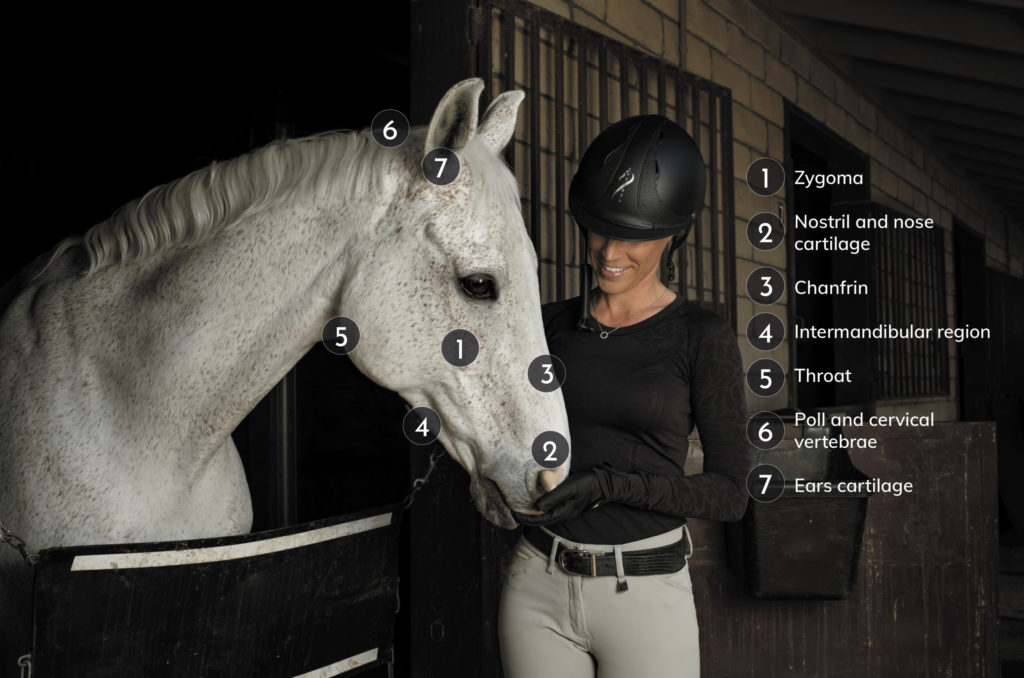
Some parts of the horse’s head are especially sensitive and must be unobstructed as much as possible.
Firstly, the cartilage and the respiratory area in the nose (2) can be a major cause of stress for the horse if they are restricted. This area must always be kept free so that the horse can oxygenate itself properly.
Secondly, the bridge of the nose (3) and zygomatic arch (1)are bony parts where the skin can easily become irritated. The skin here is extremely thin and any rubbing will cause the horse harm or injury.
The intermandibular region (4) and throat (5), under the horse’s head, must have sufficient room to allow jaw movement and swallowing which is vital to keep the horse calm.
Finally, there are the cervical vertebrae (6) under the nape of the neck. In fact, the horse is not used to feeling pressure here and can quickly panic and take flight. Some horses can also have bad reactions if the cartilage and muscle tissue below the ears (7) is constrained. The muscle must be able to rotate in all circumstances as it is a key means of communication for the horse.
A conventional bridle has several parts that can be independently adjusted:

These are adjustable on both sides of the bridle and must be perfectly symmetrical. The bit straps ensure the bit is properly positioned in the horse’s mouth and the right pressure is exerted. The horse must be able to move its tongue, chew and salivate. This combination relaxes the jaw and nape of the neck. The tongue is connected to the horse’s shoulders and nape of the neck by the bridle and hyoid muscles. If the horse’s tongue is hasn’t enough room to move, this can cause strong muscle contractions throughout its body and completely prevent it moving forwards. Be careful to not place the bit too low in the mouth. This would result in the bit touching the horse’s teeth and it would be very painful.
The two folds at the corners of the mouth are commonly used as a guide to properly fit a bit. You can see straight away when a bit has been properly positioned as the horse can chew, swallow and move its tongue.
So, be careful when choosing your bit! Even if your bridle is well adjusted, an overly large or too tightly-fitting bit will be particularly uncomfortable for the horse.
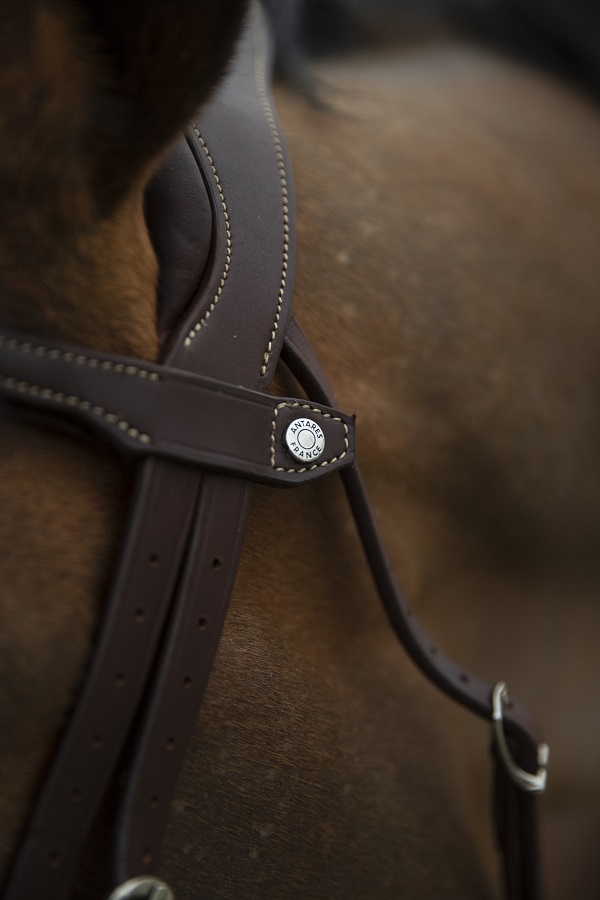
A throat-lash is a safety feature that holds the bridle in place and stops it from accidentally detaching. Broadly speaking, the throat-lash has to be loose enough to get your fist through. As such, the horse is free to swallow and chew without any pressure on its throat.
But, for the throat-lash to work, it must not move any further than the horse’s cheek. In some riding disciplines, especially carriage driving, throat-lashes are tighter because if a bridle comes loose, it can be particularly dangerous.
In contrast to conventional bridles, Antarès bridle throat-lashes are “offset”. They attach to the rear of the headpiece, giving the horse a real sense of freedom. It is also easier to adjust and fit to the bridle.

Nose bands have two main functions.
Firstly, they stabilise the bridle and ensure it sits symmetrically on both sides of the horse’s head. Secondly, they guide lateral jaw movements to stop the jaw moving to the left and right. They also prevent the horse bolting from contact when opening the mouth. The nose band must however not stop the horse from moving its tongue, as explained above, to adjust the bit and bit straps.
Some nosebands have straps that attach directly to the headpiece. They are preferable to “mobile nose bands” made from a single strap that encircle the horse’s head. These nose bands can irritate the nape of the neck and fail to keep the bridle stable. Well fitted, a noseband must be loose enough for you to insert two fingers perpendicular to the bridge of the nose.
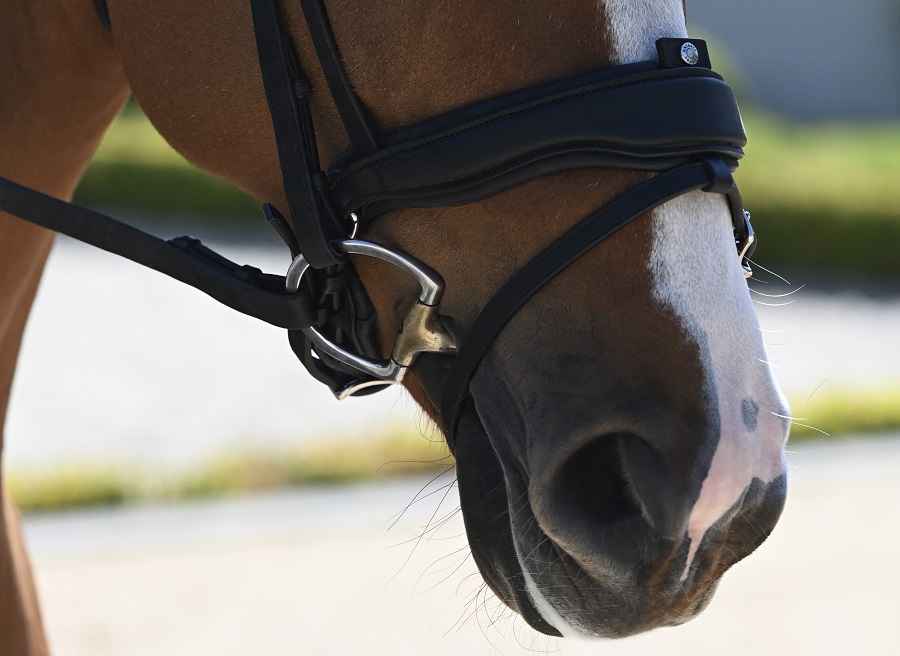
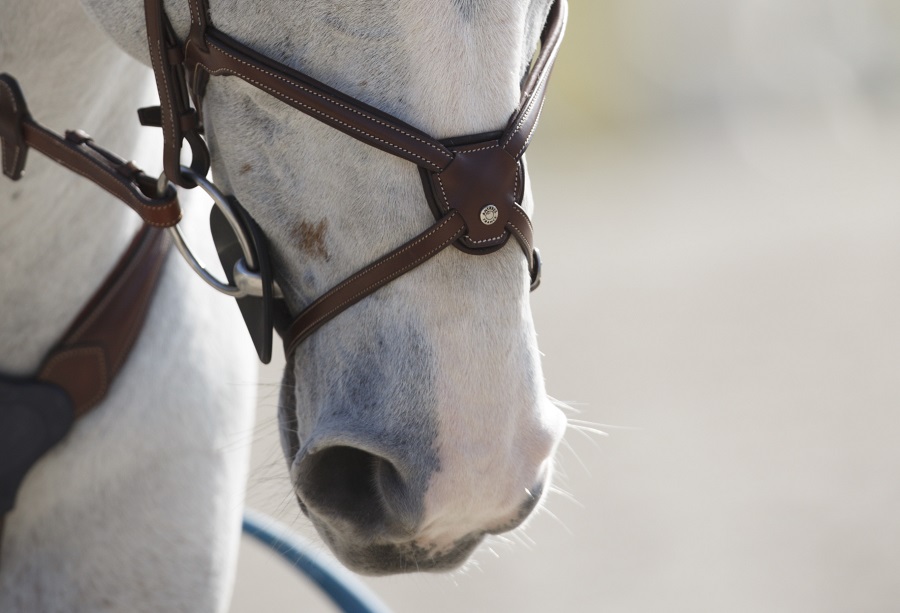

There are several types of nose band. The French noseband, the most common type, forms a narrow strip that sits quite high on the bridge of the nose. To be properly positioned, it must be fitted under the zygomatic arch with room for one finger. This is less restrictive for the horse, freeing up the mouth and acting on the jaws. It can nevertheless cause lesions if too tight or badly positioned.
This type of noseband also comes in combined form with an additional piece of leather attached that fits snuggly to the chin. It should be used carefully because if a nose band too tightly fitted it can be very uncomfortable and completely immobilise the horse’s mouth.
Figure 8 / crossed nose bands are similar to their combined counterparts except that they can slide. They are very popular as they look good but are difficult to adjust and are relatively uncomfortable.
It should also be mentioned that drop nose bands sit a lot lower and act directly on the mouth. These nose bands should be used in specific cases as they are still very upsetting for the horse. If a drop noseband is badly adjusted, it affects the airways.
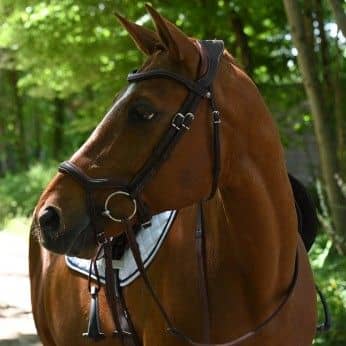
In nutshell, the perfect nose band must address two issues. It should provide good contact with the horse’s mouth while allowing it to chew freely. The Antarès “Y” noseband bridle provides a snug fit while preventing lateral lower jaw movement. As such, it helps better control horses that flee or bolt on contact with their bits, or who seek too harsh a contact.
The “Y” noseband’s specific design delivers a similar outcome to that of a German nose band, or nose band bridle. It does this while limiting the pressure exerted on the nasal passages to prevent any breathing difficulties. The design has also been meticulously thought through to prevent any risk of pinching between the noseband and the bit rings.
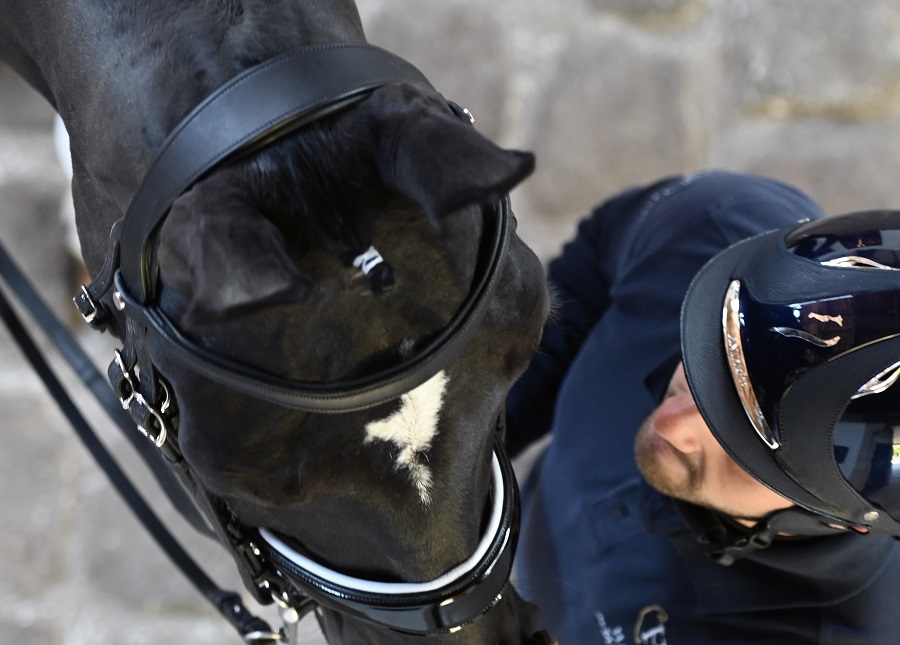
Broadly speaking, the main purpose of the headpiece is to support all parts of the bridle and properly distribute pressure. Sitting behind the horse’s ears, the headpiece applies pressure where the occipital bone (the last bone to the rear of the horse’s head) and the atlas (the first of seven cervical vertebrae) meet. The contact point involves the atlanto-occipital joint and the nuchal ligament that connects the cervical vertebrae to the withers. This is a particularly sensitive area that opens and closes the nape of the neck. Freeing up the nuchal zone must be your priority when choosing your headpiece. To adjust your headpiece, you should be able to slip your flat hand between the nape of the horse’s neck and the headpiece without causing it discomfort.
Headpieces increasingly come in a “drop” form so that they can be placed a lot further back on the nape of the neck. The axis, the second cervical vertebra that allows the head to rotate, subsequently takes the pressure. While the shape of the headpiece leaves the first cervical vertebra free to move, it actually just displaces the problem.
Headpieces come in many shapes and sizes, such as straight, anatomic, bridge headpieces, etc. but the key is to find the one that best matches your horse and your riding.
The Antarès Precision headpiece is a flagship innovation from our bridle range and provides a comprehensive response to issues mentioned above. It frees up the first cervical vertebrae and the atlanto-occipital joint by a bridge that sits above the nape of the neck. Pressure and weight from the bridle is distributed by two broad lateral ergonomic pads.
The Antarès “Precision” headpiece is approved by the FEI for dressage competitions, eventing and show-jumping. This also applies to all components in Antarès bridles, however, the rules for competition horse tack may vary according to events and sports federations. Make sure you check on approved horse tack before your competitive events.

400,00€
The Precision Y noseband anatomic bridle has been developed with equestrian health professionals. The headband’s 2 sets of ergonomic pads free the vertebrae from any pressure. The Y noseband provides a snug fit to the horse’s mouth while restricting any sideways movement in the lower jaw.